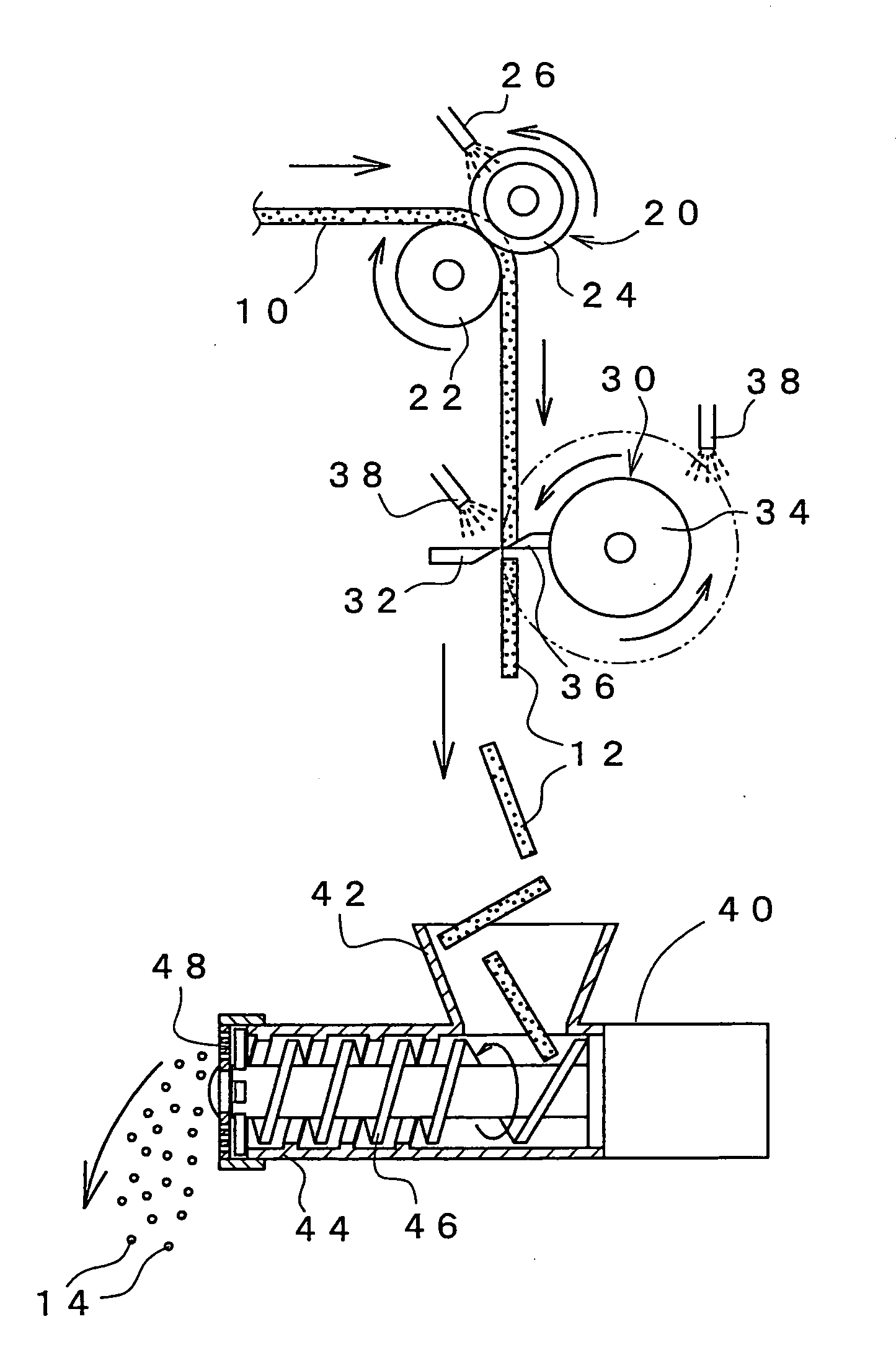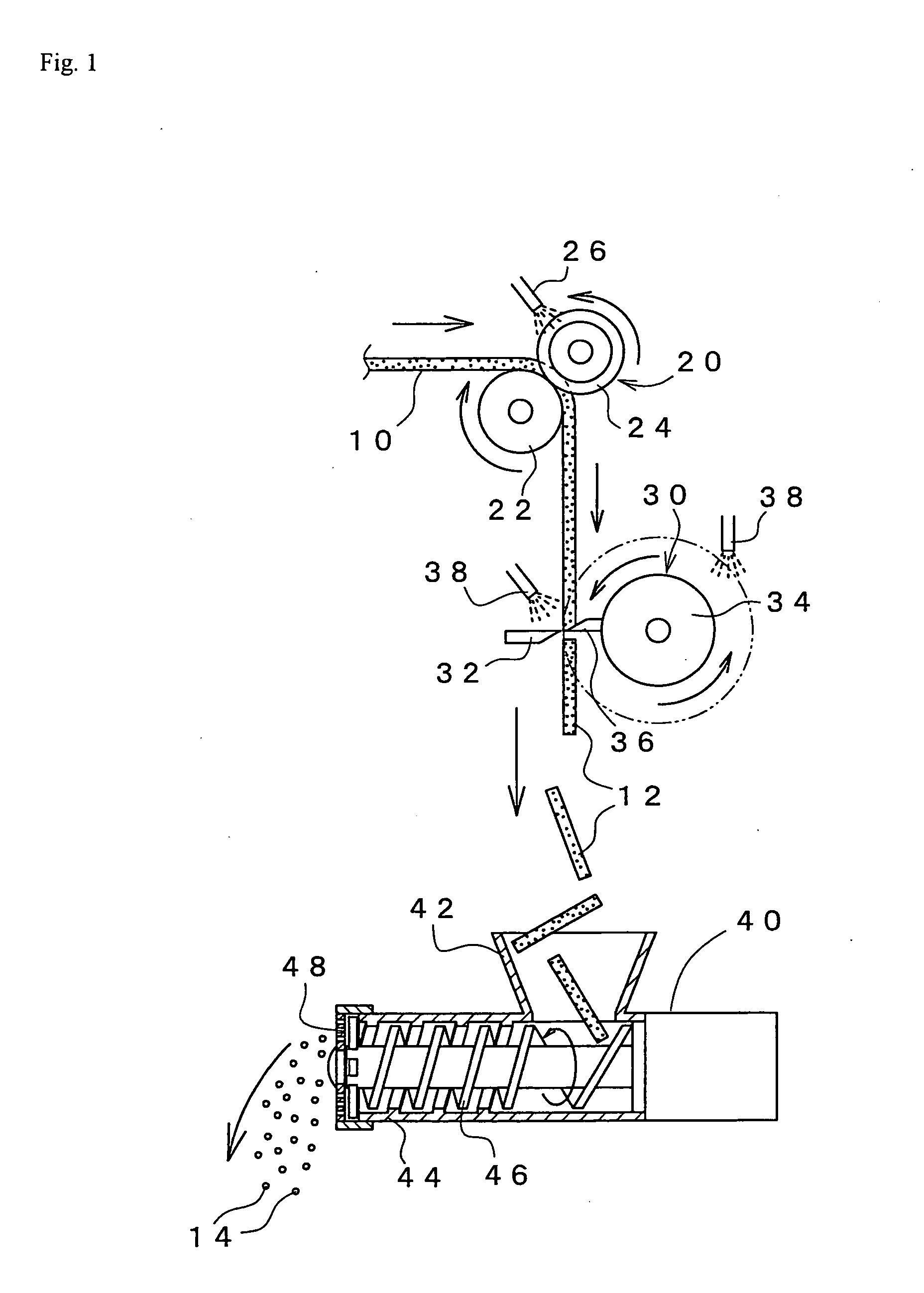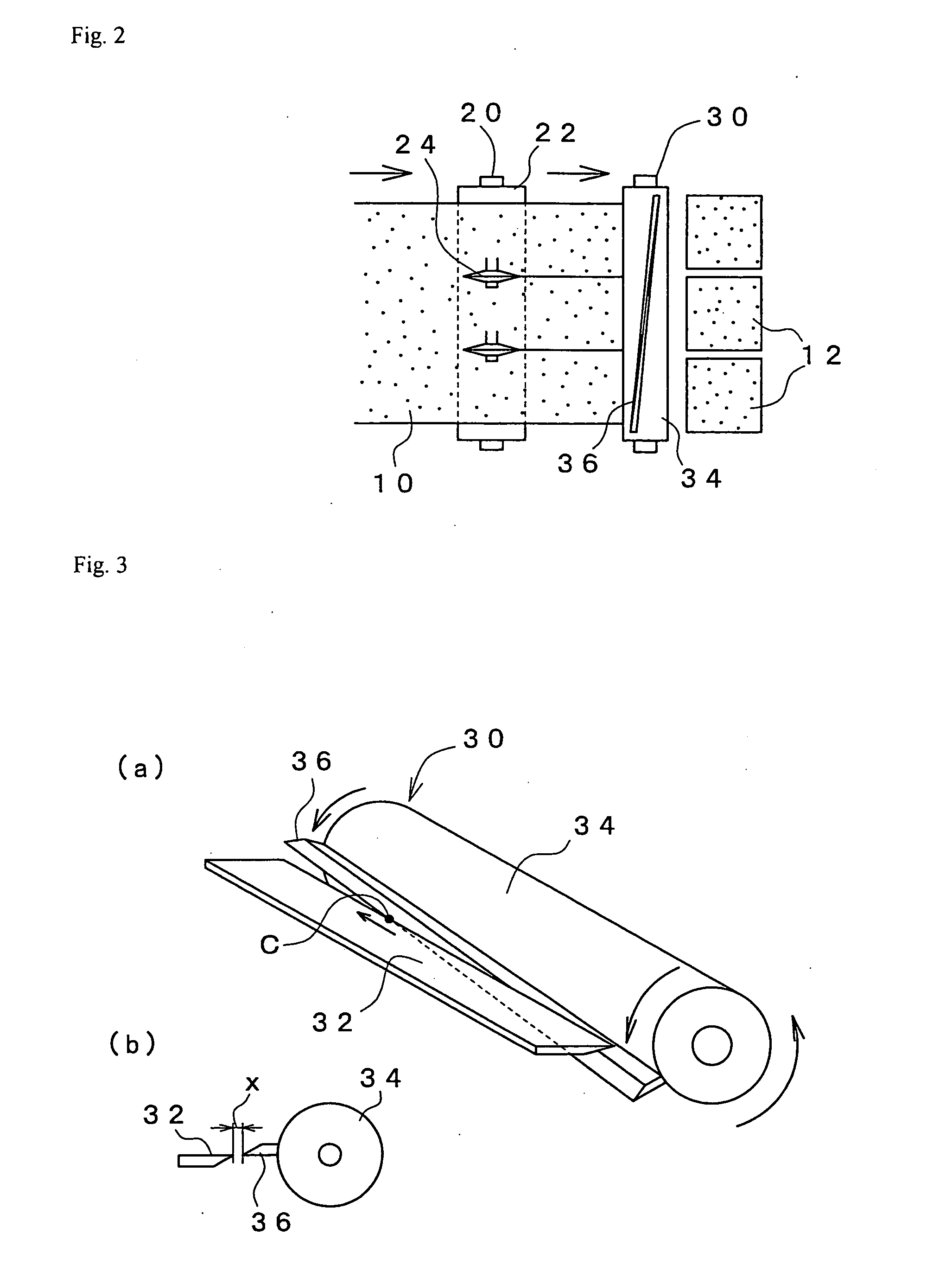Process for production of hydrogel particles and process for cutting of high-concentration hydrogel sheet
a technology of hydrogel particles and hydrogel sheets, which is applied in the direction of metal working apparatus, filament/thread forming, paper and textiles, etc., can solve the problems of insufficient prevention of hydrogel inability to produce hydrogel particles, and inability to prevent sheet adhesion to the cutting blade, etc., to achieve excellent water absorption performance, high quality and performance, and efficient production
- Summary
- Abstract
- Description
- Claims
- Application Information
AI Technical Summary
Benefits of technology
Problems solved by technology
Method used
Image
Examples
example 1
[0193]:
[0194] A monomer liquid was prepared by stir-mixing the following solutions together at predetermined flow rates. [0195] A 48.5 weight % aqueous sodium hydroxide solution 73.5 g / s. [0196] A 53.9 weight % aqueous acrylic acid solution 169.2 g / s. [0197] A solution 1.43 g / s prepared by dissolving 77.4 weight parts of a 50 weight % aqueous acrylic acid solution, 0.781 weight part of 2-hydroxymethyl-2-methylpropiophenone, 0.849 weight part of a 46 weight % aqueous pentasodium diethylenetriaminepentaacetate solution, and 21.0 weight parts of polyethylene glycol diacrylate (average molecular weight: 523) together.
[0198] The temperature of the resultant monomer liquid was stable at about 95° C.
[0199] The monomer liquid was continuously supplied to a supply pipe line and continuously stirred in this supply pipe line, and then a 3 weight % aqueous sodium persulfate solution was caused to flow into this monomer liquid at a flow rate of 3.40 g / s to thereby form a mixed liquid. This mi...
example 2
[0214]:
[0215] A continuous sheet composed of a hydrogel sheet having been produced by the same process as of Example 1 was supplied to a slitter by a conveying belt.
[0216] The slitter being used is the same score cutter as of Example 1, but its score cutter blades and receiving roll are coated with a fluororesin. The continuous sheet was widthwise divided into four at widths of 20 cm in the same way as of Example 1.
[0217] The continuous sheet hung down vertically from the slitter was supplied to a cutter.
[0218] The cutter has basically the same structure as of Example 1, but its fixed blade and rotary blade are coated with a fluororesin. The continuous sheet was continuously cut every 15 cm lengthwise of the continuous sheet at 30 rpm in number of revolutions of the revolution body. Obtained were cut pieces almost in the shape of a rectangle of 20 cm×15 cm. There was seen no adhesion of the continuous sheet to the slitter or to the cutter. There was seen no re-adhesion between c...
example 3
[0223]:
[0224] A continuous sheet composed of a hydrogel sheet having been produced by the same process as of Example 1 was supplied to a slitter by a conveying belt.
[0225] The slitter being used was the same score cutter as of Example 1, but its rotary blades and receiving roll were coated with a fluororesin. Spraying nozzles to spray the rotary blades with water were used. The amount of water being sprinkled was in the range of 5 to 10 cc / min.
[0226] The continuous sheet was widthwise divided into four at widths of 20 cm in the same way as of Example 1.
[0227] The continuous sheet hung down vertically from the slitter was supplied to a cutter.
[0228] The cutter has basically the same structure as of Example 1, but its fixed blade and rotary blade are coated with a fluororesin. Each of the fixed blade and the rotary blade was provided with a spraying nozzle to spray water thereto and a unit to supply water to this spraying nozzle. The amount of water being sprinkled was in the ran...
PUM
| Property | Measurement | Unit |
|---|---|---|
| Length | aaaaa | aaaaa |
| Percent by mass | aaaaa | aaaaa |
| Concentration | aaaaa | aaaaa |
Abstract
Description
Claims
Application Information
 Login to View More
Login to View More - R&D
- Intellectual Property
- Life Sciences
- Materials
- Tech Scout
- Unparalleled Data Quality
- Higher Quality Content
- 60% Fewer Hallucinations
Browse by: Latest US Patents, China's latest patents, Technical Efficacy Thesaurus, Application Domain, Technology Topic, Popular Technical Reports.
© 2025 PatSnap. All rights reserved.Legal|Privacy policy|Modern Slavery Act Transparency Statement|Sitemap|About US| Contact US: help@patsnap.com



